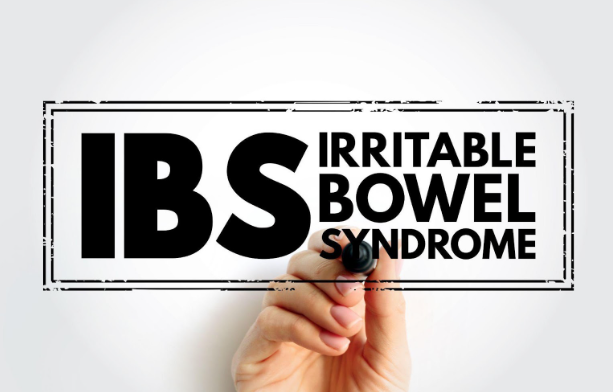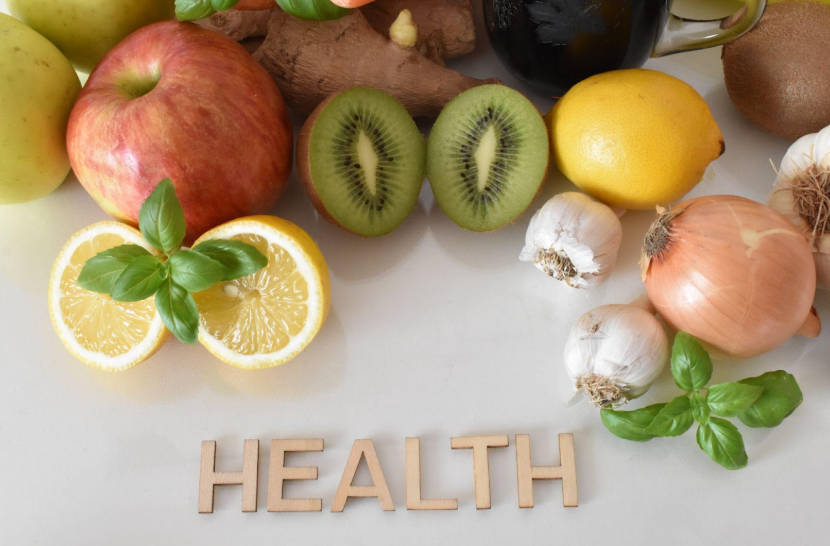Navigating a Gluten-Free Lifestyle and Managing Symptoms

When it comes to gluten, it’s difficult to truly fathom how many foods contain it until you have to be wary of eating it. As such, having a gluten-free lifestyle can seem difficult at best. With some knowledge and strategies, though, you can manage symptoms effectively and enjoy a healthy, fulfilling life.
What Exactly Is Gluten, and Why Is It So Problematic?
Gluten is a protein that’s commonly found in barley, rye, wheat, and their derivatives. It gives dough its elasticity and is what gives food such as bread its chewy texture. For people with celiac disease, gluten triggers an immune response that damages the small intestine, leading to a host of symptoms ranging from digestive issues to skin rashes and fatigue. Non-celiac gluten sensitivity (NCGS) causes similar symptoms without intestinal damage, while wheat allergy involves an allergic reaction to proteins in wheat, including but not limited to gluten.
When it comes to effective treatments, there’s really only one solution: a diet that’s completely free of gluten. Luckily, with time and practice, you can identify gluten-containing foods and find delicious alternatives.
Identifying Gluten-Containing Foods
The first step in managing a gluten-free lifestyle is learning how to identify foods that contain gluten. Some sources are obvious, like bread, pasta, and baked goods made with wheat flour. However, gluten can also be sneaky and hide in other places, including the following:
- Processed Foods: Many processed foods, like soups, sauces, and ready meals, may contain gluten as a thickener or stabilizer. Always check the ingredient list for wheat, barley, rye, or their derivatives.
- Condiments: Soy sauce, salad dressings, and some kinds of vinegar can contain gluten. Look for gluten-free alternatives or make your own condiments at home.
- Snacks: Many chips, crackers, and snack bars contain gluten. Opt for snacks labeled gluten-free, or choose naturally gluten-free options like nuts, seeds, and fruits.
- Beverages: Some alcoholic beverages, especially beer, are made from barley and contain gluten. Wine and distilled spirits are generally safe but always check the label.
When shopping, familiarize yourself with gluten-containing ingredients such as malt, spelt, triticale, and durum. Many products now carry a gluten-free label as well, which makes shopping easier, but always double-check to avoid any hidden gluten.
Stocking a Gluten-Free Kitchen
Transitioning to a gluten-free lifestyle often starts with a kitchen overhaul. Here’s how to get started:
Purge Gluten-Containing Foods
Go through your pantry, fridge, and freezer, and remove any foods that contain gluten. This includes not only obvious items like bread and pasta but also sauces, condiments, and snacks that might contain hidden gluten.
Restock with Gluten-Free Alternatives
Replace gluten-containing staples with gluten-free alternatives. Gluten-free bread, pasta, and flour blends are widely available in most grocery stores. Stock up on naturally gluten-free foods like rice, quinoa, potatoes, fresh fruits, vegetables, meats, and dairy.
Organize Your Kitchen
If you share a kitchen with people who eat gluten, create a separate area for your gluten-free foods and utensils. Cross-contamination is a significant concern, so consider having separate toasters, cutting boards, and strainers for gluten-free foods.
Learn to Cook Gluten-Free
Cooking at home is one of the best ways to ensure your food is gluten-free. Invest in a few good gluten-free cookbooks or explore the many gluten-free recipes available online. Learning to bake with gluten-free flour like almond, coconut, or rice flour can open up a world of delicious possibilities.
Dining Out Gluten-Free
Eating out can be one of the more challenging aspects of a gluten-free lifestyle, but it’s entirely manageable with a little preparation. Before heading to a restaurant, check their menu online for gluten-free options. Many restaurants now offer gluten-free menus or clearly mark gluten-free dishes. If the information isn’t available online, call ahead and ask about their gluten-free offerings and how they handle cross-contamination.
When you arrive at the restaurant, inform your server that you have a gluten intolerance or celiac disease and need to avoid gluten completely. Don’t be afraid to ask how the food is prepared and request modifications if necessary. Most restaurants are willing to accommodate dietary restrictions if they know what you need.
Even if a dish is naturally gluten-free, it can become contaminated if it’s prepared on the same surfaces or with the same utensils as gluten-containing foods. Ask about the restaurant’s practices to minimize cross-contamination.
If you’re unsure about the options available or if you’re going to an event where you can’t control the menu, bring your own gluten-free snacks or meals. This way, you won’t have to worry about finding safe food to eat.
Managing Symptoms on a Gluten-Free Diet
Even after adopting a gluten-free diet, it’s possible to experience symptoms due to accidental gluten exposure or other factors. Here are some tips for managing symptoms and maintaining your health:
- Monitor Your Symptoms: Keep a food and symptom diary to track what you eat and how you feel. This can help you identify any hidden sources of gluten or other foods that might be causing issues.
- Stay Hydrated: Drinking plenty of water helps flush out toxins and can ease digestive symptoms. Herbal teas like ginger or peppermint can also soothe an upset stomach.
- Use Supplements Wisely: If you’re experiencing ongoing digestive issues, talk to your doctor about supplements that can support your gut health, such as probiotics or digestive enzymes.
- Get Enough Fiber: Gluten-free diets can be low in fiber, leading to constipation or other digestive issues. Include high-fiber foods like beans and gluten-free grains like quinoa and brown rice in your diet.
- Consider Other Food Intolerances: Some people with gluten intolerance also have sensitivities to other foods, such as dairy or soy. If you continue to have symptoms despite avoiding gluten, consider getting tested for other food intolerances.
- Practice Stress Management: Stress can exacerbate digestive symptoms and other health issues. Incorporate stress-reducing activities into your daily routine to help, such as yoga or spending time outside.
- Stay Positive: Adjusting to a gluten-free lifestyle can be challenging, but maintain a positive mindset. Focus on the foods you can enjoy and the improvements in your health rather than what you’re missing out on.
Staying Social While Gluten-Free
Social situations can be tricky when you’re following a gluten-free diet, but they don’t have to be a source of stress. One easy way to stay social and gluten-free is to host gatherings. When you’re the host, you have full control over the menu, so you can make sure everything is gluten-free. You can introduce your friends and family to delicious gluten-free dishes as well, helping them understand your dietary needs.
If you’re attending a party or potluck, offer to bring a gluten-free dish that you can safely enjoy. That way, there will be something for you to eat, and it’s a great way to share your favorite gluten-free recipes with others. Sometimes people might not understand the seriousness of a gluten intolerance or celiac disease. Take the time to explain why you need to avoid gluten completely and how they can help you manage your diet.
When traveling or spending the day out, pack gluten-free snacks or meals to avoid getting caught without safe food options. Gluten-free protein bars, nuts, and dried fruit are great options for on-the-go eating.
If you need support in navigating a gluten-free lifestyle, look for communities or online support groups to join. There you can share tips, recipes, and experiences with others who are also going gluten-free.
Maintaining Long-Term Health on a Gluten-Free Diet
A gluten-free diet can be nutritionally balanced and healthy, but it does require some planning to ensure you’re getting all the nutrients you need.
Focus on Whole Foods
While gluten-free substitutes for bread, pasta, and other baked goods can be helpful, many are highly processed and lack essential nutrients. Emphasize whole, naturally gluten-free foods like fruits, vegetables, lean proteins, and gluten-free grains in your diet.
Keep Adequate Nutrient Intake in Mind
People on a gluten-free diet may be at risk for deficiencies in certain nutrients, including fiber, iron, calcium, and B vitamins. Regularly include nutrient-rich foods like leafy greens, nuts, seeds, and fortified gluten-free products in your meals. You may also want to talk to your doctor or a dietitian about whether you need to take supplements.
Stay Active
Regular exercise supports overall health and can help manage symptoms like bloating and fatigue. Aim for a mix of cardio, strength training, and flexibility exercises to keep your body strong and energized.
Regular Check-Ups
Stay in touch with your healthcare provider to monitor your health, especially if you have celiac disease. Regular blood tests can check for nutritional deficiencies, and your doctor can help you address any ongoing symptoms or concerns.
Stay Informed
Research on gluten intolerance and celiac disease is ongoing, and new information or products that could make your life easier are always emerging. Stay informed by following reliable sources of information, such as celiac disease foundations, and consider attending conferences or workshops on gluten-free living.
Enjoying Life Without Gluten
Living gluten-free doesn’t mean giving up the joy of eating or feeling restricted. Like with any new thing, just take it one step at a time. As you become more comfortable with your gluten-free diet, you’ll discover new foods, recipes, and strategies that work for you. Before you know it, gluten-free living will feel like second nature, and you’ll be well on your way to a healthier, happier life.
Our team at
Northlake Gastroenterology Associates can help you learn more about living gluten-free.
Contact us for an appointment, and live life happy and free of gluten!
More Blogs












